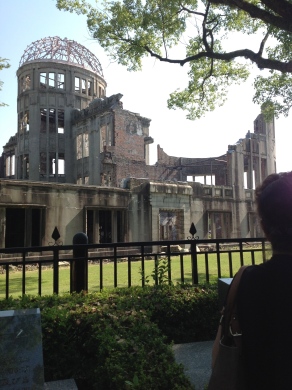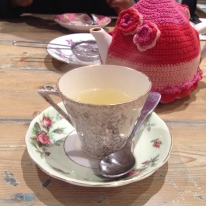This is an edited version of an assignment I submitted as part of my Journalism course in October 2014.
Journalism and the future of journalism are two ideas that have gone hand in hand for so long that, these days, they are simply strung together as one in dialogue. Ask most journalists about the future prospects of their respective careers and you can almost see the veil of gloom and doubt rise oppressively above their heads. It’s become the ominous dark cloud that never fetters – regardless of how persistent the efforts to demolish it are.
The digital world has increased exponentially over the past few years, in unforeseeable and uncontrollable ways. Naturally, this has left those in the media brooding over the possible methods that could be enforced to circumvent this ubiquitous hurdle. Yet, the minimising of funding to key media organisations is forcing big companies to shrink the size of their companies – bringing out the scepticism in even the most optimistic.
With thousands of students expected to complete their Victorian Certificate of Education (VCE) in a matter of weeks, the clock is ticking for students to make informed decisions about their futures. Yet, with all the pessimism with which Journalism is being discussed, whether our younger generations will want to prosper in journalism in the future remains a blur.
Hannah Kuhar, 17, is one of these thousands. In a matter of weeks, Kuhar will fly out of the cacoon she has concocted at Genazzano FCJ College in Kew and into higher education. With a natural ability to colourfully tell stories, Kuhar was persistent on a career in Journalism. However, this strong determination ended with the commencement of her VCE. Kuhar admits that the hype about the supposed austerity of journalism was a factor in her change in heart.
“I just thought – “what if there really aren’t any newspapers in the future?” I wouldn’t want to be a full-time blogger for the rest of my life”, Kuhar said.
When contrasting the increase in citizen journalism and the digital world with the palpable reduction of the journalism industry, Kuhar’s sentiments towards the industry are not surprising.
The Federal Government’s cut of $43.5 million over four years to the funding of Australia’s public broadcasters in the last May budget left media organisations struggling. The Media, Entertainment & Arts Alliance (MEAA) was one of the many leading organisations that vocally condemned the Federal Government’s decision – repeatedly labelling it “a broken promise”.
MEAA Media director Paul Murphy said: “You can’t hold a public broadcaster together on string and band-aids. There is a real cloud now over the ability of the ABC to meet the requirements of its charter in serving regional and rural Australia. SBS, which was starved of funds in recent years, is once again in a desperate position.”
More recently, there was intense upheaval as the ABC proposed to axe Lateline after 14 years on air, as well as many of the state-run 7.30 reports. Prominent journalist and previous Media Watch host, Jonathan Holmes, founded the ‘Save Lateline’ petition, addressed to the ABC board and Communications Minister Malcolm Turnbull. It strongly urged Australians to “protect quality investigative reporting and current affairs coverage”. In less than 48 hours, the petition accumulated almost 60,000 signatures –which safeguarded Lateline from the axe.
However, despite the promulgated ‘end’ of Journalism, University enrolment figures for journalism courses show that the number of students wanting to study journalism has remained constant – despite the tumultuous years of changes to the industry.
The Bachelor of Journalism course at the Royal Melbourne Institute of Technology (RMIT) is renowned as having one of the best journalism courses in the country, mainly due to its strong focus on industry based experience.
RMIT University’s selection officer, Josie Vine, makes about 70 offers per year for the undergraduate journalism program, which she says, has remained “largely unchanged over the past few years”.
As part of the course, students are exposed to the news environments of highly regarded organisations, such as RRR and Channel 31, prior to graduating. Josie Vine says that this helps equip students with the vital skills needed to find employment after the completion of their tertiary degree.
“At RMIT, we teach journalism through practice, and make sure all students have experienced real news production before they graduate. This means we need to keep numbers quite small and it’s why our course is quite exclusive and competitive. International offers are separate, and will vary according to the quality of candidates”, Vine said.
Jennifer Zhao contributes to the small percentage of international students who are offered a place in RMIT’s journalism course. Zhao believes that it was her natural raconteur abilities that attracted her to journalism from a young age. However, after bearing the sole responsibilities for her living expenses since her migration to Australia at the young age of17, Zhao has realised that her love for storytelling may not overweigh the need for a stable and financially rewarding career for her future.
“I sometimes consider pursuing something else mainly due to the bleak salary prospect in the Journalism profession. I still see myself working in the media industry, but I’ll try go for something a little bit more flexible and open for a wide range of job opportunities”, Zhao said.
Due to the increasingly competitive nature of the Journalism industry, Zhao believes that aspiring Journalists will need to show a range of versatile skills in order to be recognised in the future.
“To be a sought after Journalist, we have to equip ourselves with extra skills – be it editing or filming – on top of excellent writing.”
The Under Age is an online publication conducted by The Age and Express Media that allows 12 aspiring journalists to work in a journalistic environment, with industry professionals and fellow students with a keen aptitude for news.
“We can’t drink, drive or vote, but we can write. Look at the world through our eyes”, the website reads.
More than 200 high school students have applied for a position at The Under Age this year and according to Benjamin Riley – the head of The Under Age publication – the number of applications will continue to rise.
“It’s pretty unique. I’m not aware of any such programs in Australia that offer high school students a 12 month traineeship where they learn to write articles for publication and work one-on-one with industry professionals”, Riley said.
Students meet at The Age Media House fortnightly where one hour is devoted to Q&A sessions with key industry figures. The other hour focuses on the practicalities of journalism, like writing skills, the ethics and regulations of journalism and the types of journalism.
An array of journalists have come into The Under Age this year, including prominent investigative journalist, Richard baker.
Though The Under Age is an online forum for aspiring journalists’, Riley concedes that not every student who completes their traineeship with The Under Age will continue to have a passion for journalism. By teaching students to have realistic expectations of the industry, Riley believes students will be able to make an informed decision about their futures – gaining invaluable experience either way.
“The Under Age is a publication and everyone will come out of it with a portfolio of published work, especially working with a masthead of prestige like The Age which isn’t something a lot of students can say they have”.
Rachael Ward believes that her participation in The Under Age has discernibly opened doors for her. Ward is currently studying a Bachelor of Journalism at La Trobe University and says that applying for The Under Age is “the best decision I’ve ever made.”
Admittedly, Ward tried convincing herself that she wanted to pursue a more “stable” career like Law, until she found a letter she wrote to her future self while aged 12.
“It’s funny, I’d completely forgotten that I wanted to be journalist when I was younger until I opened the letter. I had written something about really hoping I’d become a writer. So I guess that desire to just have a go at journalism encouraged me to pursue it.”
Ward believes that The Under Age has helped her gain confidence with her writing which has allowed her to write for a broader range of publications. Since joining The Under Age, Ward has written for The Age, Cosmopolitan Australia, Birdee, The Weekly review and Truth 4 Youth.
Ward believes the death of journalism talk is overhyped because society will always need quality journalists to communicate and act as a point of authority regarding the events from around the world. However – like Zhao – Ward worries about the large range of skills Journalism students may need to be equipped with for the future.
“The real issue is that journalism as we know it is changing, and that’s not necessarily a bad thing. Although I do worry about not having the right skills to be a journalist in the future. As newsrooms continue to shrink journalists are going to need skills like being able to code and be able to produce info graphs, which I personally am yet to master.”
Two years into his Bachelor of Science degree, Chris De Silva, 21, realised that he “actually hated” his course. De Silva was in the middle of a tedious calculus equation when he decided to write his first WordPress blog post about the NBA as a form of procrastination. Perhaps underestimating the power of social media and the quality of his writing, De Silva was overwhelmed by the response he received after tweeting his first article “with a couple of hashtags”.
“I didn’t really expect anyone to notice it but some time later, I got a notification on Twitter from this guy who was asking whether I wanted to write for his website”.
De Silva now studies Journalism at La Trobe University and believes he has found the passion and drive he had been trying hard to attain in his previous course.
Talking about why he decided to pursue a career that has been speculated to have no future, De Silva highlighted the importance of hard work.
“If you’re amongst the best at your job, then no matter what the cuts are, there is always going to be someone who will want to employ you. That’s the kind of mantra that I live by. However, I know it’s a competitive industry and if I kick my feet up and relax, there’s someone else working overtime to surpass me. So it’s up to me not to let that happen.”
This is a mantra that is also shared by Ward, Zhao and Kuhar.
Kuhar is now leaning towards the more “stable” option of an Arts/Law degree, but believes the work experience she undertook when she was still interested in journalism has helped her excessively, especially with her self-confidence. She still writes for a variety of publications, like Footy Nuts, and believes that extra-curricular activities are essential for aspiring journalists’ who want to get into the industry.
“Having a good ATAR only shows that you’re good at the books, not that you’re a good journalist. It would be nonsensical to not have had any journalism work experience before studying it.”
About technology, De Silva said: “Technology is a very powerful tool and when used effectively, it can pay huge dividends”. And indeed social media, like Twitter, are excellent ways to take a leaf out of De Silva’s book on how to be noticed in the cyber world. We can only hope that, in the near future, the journalism industry will learn to effectively fuse the digital world with journalism and find other means, like increased advertising, to gain profits.
George Orwell once said that “Journalism is printing what someone else does not want printed: everything else is public relations.” And that the public will always need a bullish and reliable fourth estate will always be a fact.














